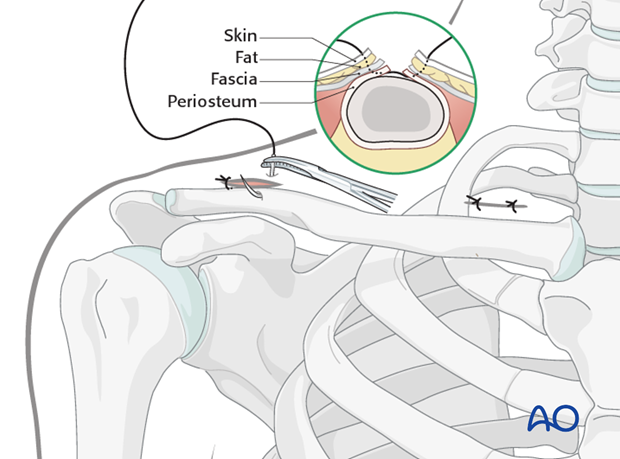MIPO - anterior approach to the clavicle
1. Indication
MIPO approaches to the diaphyseal clavicle can be utilized for many clavicular diaphysis fractures requiring anterior and superior plating.
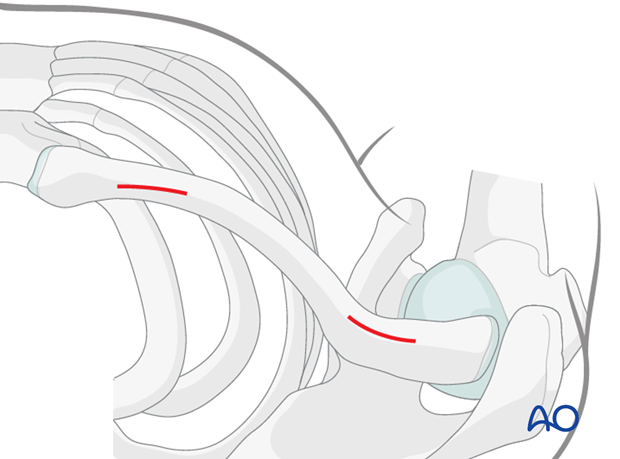
2. Anatomy
The clavicle is an S-shaped bone, anteriorly concave laterally and anteriorly convex medially. The cross sectional anatomy along its lateral to medial course changes from flat to tubular to prismatic. The junction from the flat region to the tubular region is a stress riser and this explains the higher incidence of midshaft fractures. Commonly, plates are applied to the superior and/or anterior surface of the clavicle.
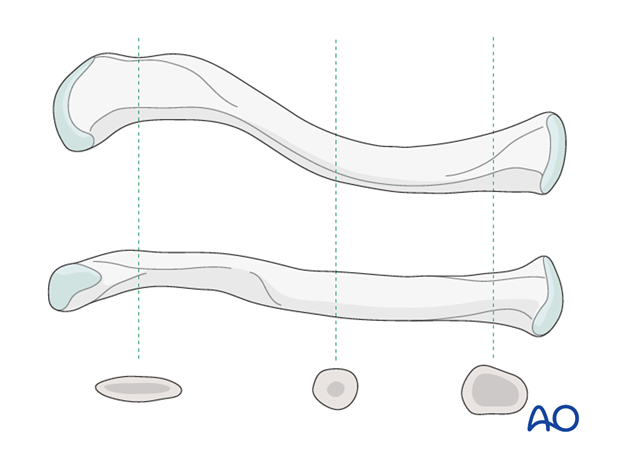
The neurovascular structures, namely, the subclavian artery and vein and the brachial plexus, pass from a posterosuperior to antero inferior direction, between the first rib and the clavicle at the junction of its medial and middle thirds and are thus vulnerable during surgery and instrumentation in this region. In the middle third or the tubular portion, the subclavius muscle and fascia protect the neurovascular structures from the fracture. However, to avoid injury to the neurovascular structures, care should be exercised when sharp instruments are used in this area.
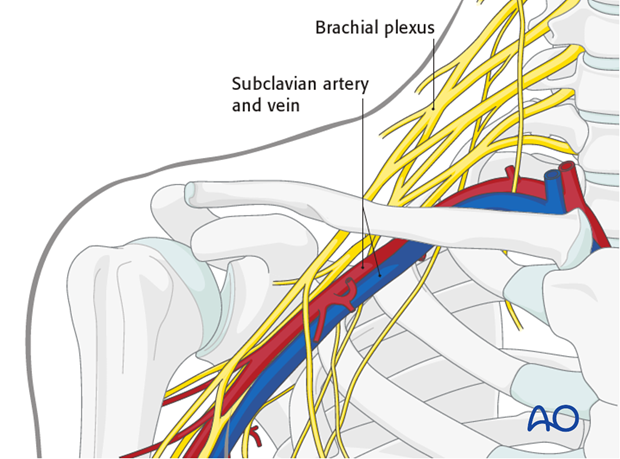
The sternocleidomastoid muscle, which inserts on the medial third of the clavicle, acts as a deforming force, pulling the medial fragment superiorly, following a fracture. The weight of the arm acts as a deforming force pulling the lateral fragment inferiorly and anteriorly. Pushing of the shoulder upward helps to reduce the lateral fragment to the medial fragment.
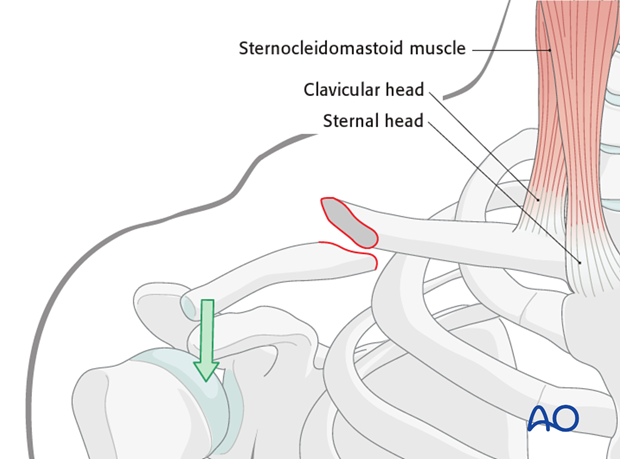
There are numerous ligamentous attachments to the clavicle in which the coracoclavicular and acromioclavicular ligaments have a dominant role in stabilizing the clavicle laterally.
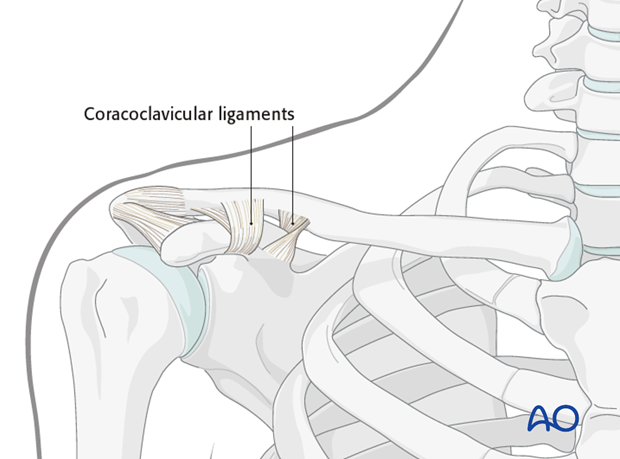
3. Skin incisions
Two skin incisions, each 2–3 cm in length, are made over the lateral and medial ends of the clavicle corresponding in position to the ends of the preselected plate.

A subcutaneous tunnel is created using blunt dissection connecting the medial and lateral incisions.
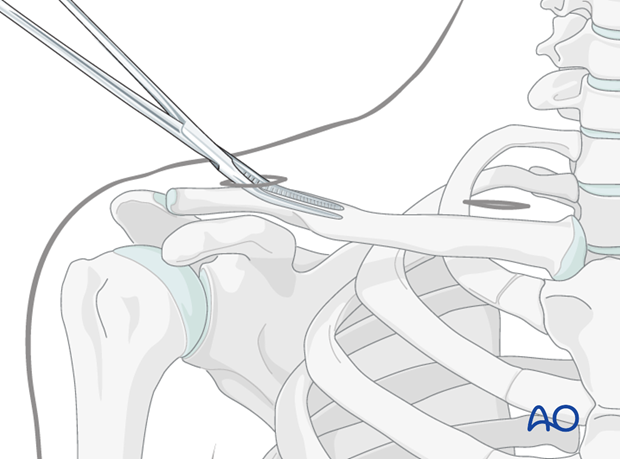
Stab wounds are made for insertion of screws, as well as for pins and pointed reduction forceps. The stab wounds for the screws are made directly over the plate holes which can usually be palpated through the skin. A similar small incision can be made directly over the fracture if a limited open reduction has to be performed.
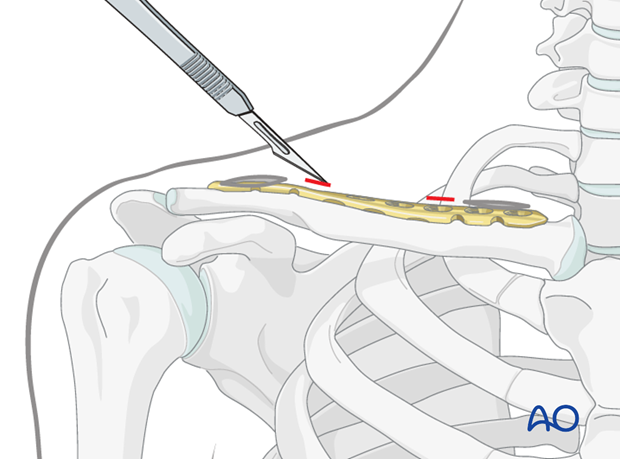
4. Closure
After copious irrigation of the wound the fascia and subcutaneous tissues are closed in layers.
It is important that the fascial closure is water tight and completely covering the underlying plate. This will optimize healing and prevent deep infections in this area, which has a limited soft tissue envelope.
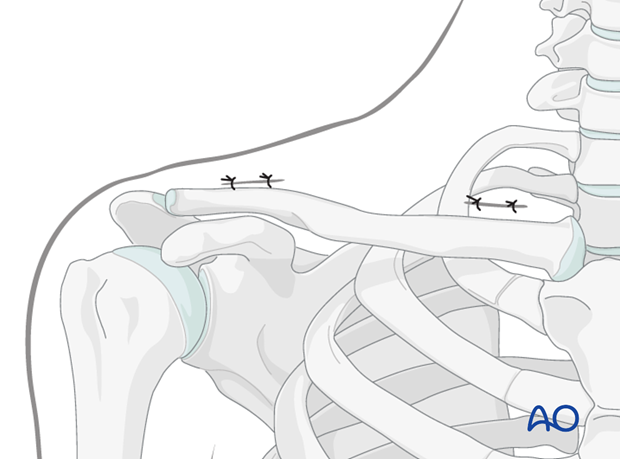
Pearl: Incorporating the cut and elevated underlying periosteum with the fascial repair will help to reduce dehiscence and strengthen closure of the fascia.
